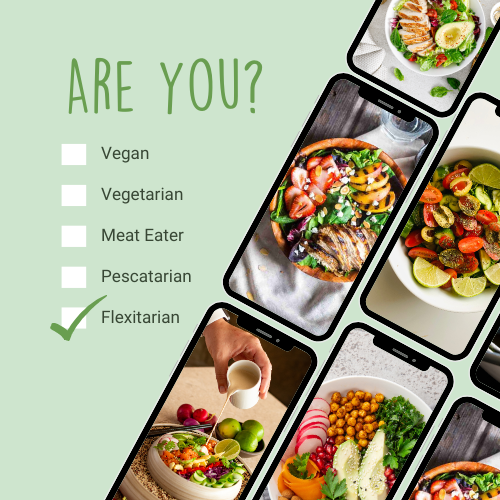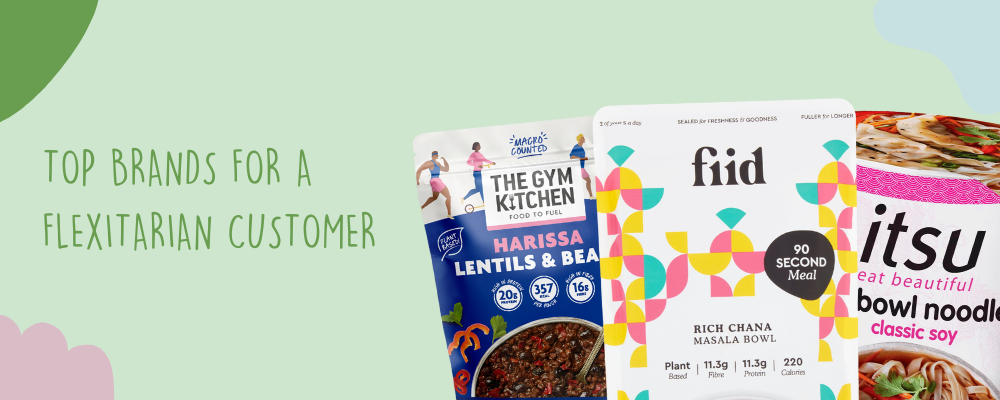The Flexitarian Trend: Retail Tips for Growing Sales

Focus on: Flexitarian diets – are they back?
Twenty-three per cent of consumers claim they are ‘flexitarians’ – a diet that is primarily vegetarian, with the occasional meat or fish dish thrown in. The diet has soared in popularity in recent years due to two main drivers; the rising cost of red meat and the desire to simply reduce meat consumption without giving it up entirely.
While there is an opportunity for retailers to cater for these customers and gain repeat custom, the challenge is identifying these consumers among your shopper base. Retailers won’t know unless it’s something their customers declare, so how do you meet their needs?
“Like anything, you need to talk to your customers about what to stock,” says Faraz Iqbal, owner of Premier Linktown Local in Kirkcaldy, Fife. “Some will say they’re cutting down on meat, alcohol, or increasing protein. You can then adapt from here.”
When are people more likely to try flexitarian?
January is the most common month where people choose to try or follow a new diet. This is because many treat the New Year as a new slate, setting goals to be healthier, for example.
“January is definitely the biggest month for new diets, including flexitarian, because everyone wants to get in shape, make themselves feel better and get past the winter blues,” says Nishi Patel, owner of Londis Bexley Park in Dartford, Kent.
Iqbal adds: “Beyond January, we just have to make sure the range is there for people who continue their new healthier commitments.”
But there are opportunities outside the start of the year. Patel says April and May are popular months for shoppers to follow a healthier or flexitarian diet as they get ready for summer.

How to navigate the rise in flexitarian diets
Both Iqbal and Patel cater for flexitarian shoppers by focusing on protein products. They advise offering alternatives to cater for as many diets as possible.
Iqbal says: “We offer products that cater for those cutting down on meat or trying to increase their protein in other ways. We have fresh meals made locally, which include vegetarian options, as well as a range of protein bars.”
Meanwhile, Patel has introduced protein yoghurts, as well as other options including sandwiches and drinks. A fast seller of Patel’s is Mockingbird, a drink that offers added benefits.
“Products with added nutrients or vitamins are great for people who are flexitarian, vegetarian or looking at their health,” he explains. “Take Huel – it’s a big staple for a lot of people.”
While Huel’s premium price point can be a barrier for some shoppers, it’s worth noting that if they are spending a high amount on meat products, they might be more open to spending £3.50 on Huel or alternative meal replacement products.
Patel offers value on this brand specifically by keeping it on promotion. “We stock five varieties on promotion at £2.99 each so it always sells,” he says.
What should you stock?
Retailers can cater for flexitarian diets with a core range of grocery, snacking and chilled products, flanked by vegetarian and vegan alternatives. But to maintain or increase profits, offering products that provide a point of difference can help stand out.
At Epicurium, we task our buyers to follow food and drink trends and diets and identify the products that work for convenience stores.
We stock a range of products that can help you cater for flexitarian diets, including:
- Fiid Meal Pouches - Retailers can stock six different varieties of the Fiid brand, including Chip Shop Curry, Hearty Chickpea Tagine, Lentil & Sweet Potato Curry, Rich Chana Masala, Rich Sundried Tomato & Lentil Ragu and Smoky Black Bean Chilli. Each flavour comes in cases of eight, has an RRP of £3.35, and offers a profit on return of more than 30%.
- The Gym Kitchen: The Gym kitchen meal pouches are ideal for those following a flexitarian or vegetarian diet. It has an RRP of £2.20 and is available in a case of six.
- Itsu: Stock a well-known brand like Itsu and offer your shoppers the choice of up to eight types of noodles. You can also offer the brand’s Sachets to encourage shoppers to add flavour to meals made at home.
As the rising costs of food bills is driving the growth in flexitarian diets, it’s also likely these shoppers are cooking their meals from scratch more often. Retailers can make it easier for their customers by focusing on ready meals and fresh ingredients.
Top tips to catering for flexitarian diets
- Stick to a core range. “People still buy core range products – even if they’re following a flexitarian diet,” says Patel. “But you should also offer alternatives within this core range.”
- Don’t be afraid to try. “Give new products a go. You’d be surprised by what you can sell and yes, some will be put off by price, but for someone else, it will be worth the cost,” says Patel.
- Know what customers are looking for. “Customers are looking at the nutritional content of products more than ever before,” says Patel. “People are looking at the calories, protein levels, nutrition and cost, so take that into account.”
Are you interested in catering to the growing flexitarian demand?

